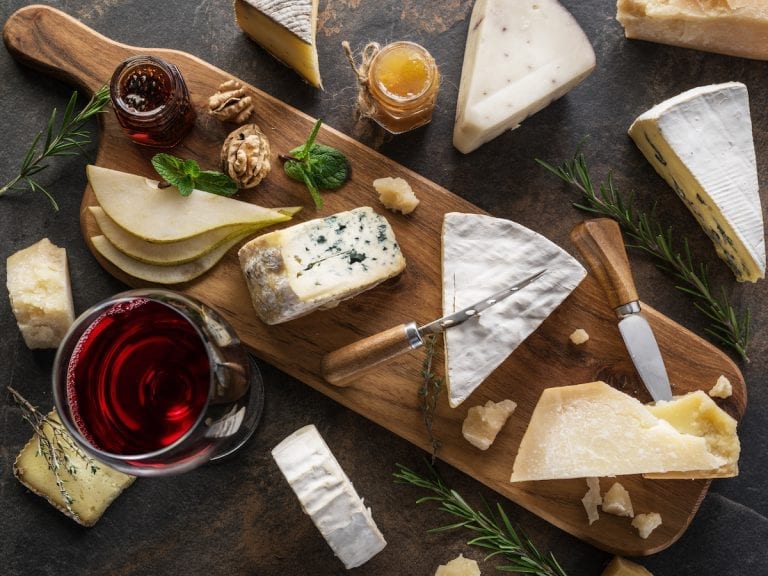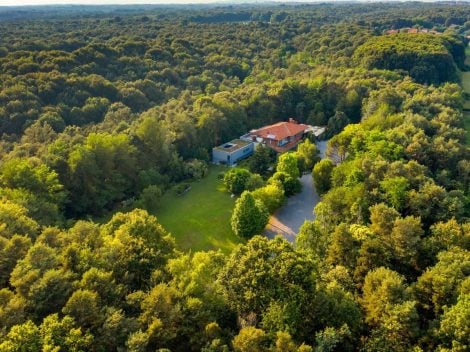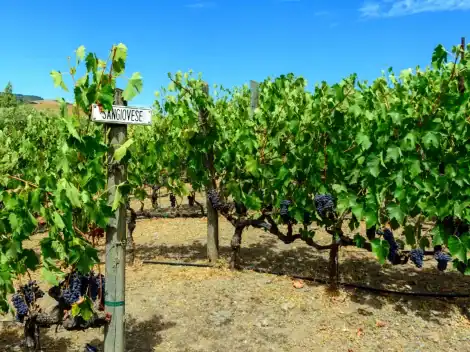When we talked about cheese-jam pairings with the great cheesemakers, affineurs and mongers, they all turned up their noses, replying that the best combination is with a good glass of wine LINK. Hence we decided to follow the advice of insiders, asking Maurizio Paparello, sommelier in force at Roscioli Salumeria, a restaurant and shop in the heart of Rome, precisely one of the Roman shrines of good cheese and good wine. He, being one of the greatest wine experts, tests and suggests the best pairings of dairy products and wine daily, picking from a dizzying cellar built over the course of thirty years of work.
La Salumeria, is actually also a restaurant (from these kitchens comes one of the most famous carbonara of Rome as well as a butter and parmigiano pasta that elevates the most domestic pasta to stardom, in a menu that plays with the many products on the shelf but certainly not limited to merely assembling them). The venue has an important deli counter, a delight for lovers of cured meats and especially cheeses, available for take-away as well as for consumption. Paired, in fact, with one of the 2,800 labels of a cellar where there is no shortage of historical vintages and collectible bottles. We asked him to give us the guidelines of this magnificent alchemy.
Cheese and wine pairing: ground rules
Like any food-wine pairing, balance is the goal, which can happen by contrast or by harmony. Taking into account a sum: between the second flavour that emerges in the cheese after chewing, and the so-called third life of the wine, the flavour that lingers in the mouth after swallowing. With an advantage, as the sommeliers of the past used to say: "a red wine that may be past its prime, can be reborn with a piece of cheese."
Key elements of this harmony are alcohol and glycerin, acidity and effervescence. They have the task of finding a balance with the salty and fatty part of the cheese, or with certain flavours typical of aged cow's milk cheeses.
If in the common vulgate a good red is the ideal playmate of a cheese board, pay attention to young tannins: the risk is that by binding to the casein of the cheese they may give life to a feeling of excessive astringency, which - paradoxically - pushes you to drink water. So let's dispel a myth: cheese + red wine? A combination to be tackled carefully that's "much more eclectic that with whites and sweet wines or bloomy cheeses."
While for the so-called drunken cheeses, the simplest and perhaps the most correct way is to pair the same wine with which the aging is done, as in the case of Barolo in Testun al Barolo.
There are some textbook pairings: think traditional gorgonzola with Port Vintage, Sauternes and roquefort - a pairing so classic that for some it is almost obvious - Comté from Jura with Savagnin, a Vin Jaune which is a "yellow wine," that's oxidized, which recalls sensations of walnut husk and apple.
An always valid rule is to respect the territorial bond by combining wines and cheeses from the same area, "what grows together, goes together." Some examples of territorial pairings? Pecorino di Pienza with a not very young Vernaccia di San Gimignano or a Carmignano, or Bagoss with sparkling wine from Lake Garda.
But let's go in order and try to identify the best pairings for each type of cheese. Spun curd, washed rind, blue cheese, pecorino, goat, cow, plus two extras. With a basic indication: aging is key, a young cheese can be radically different from the same long-aged variety. This therefore means that age requires a different pairing.
Spun curd cheeses
"For mozzarella, especially mozzarella di bufala, I'm thinking of an Asprinio from Aversa (and here's where the territorial link comes into play, Ed) or a not too heavily coloured rosé," like the rosato from Provence, very pink that does not undergo long macerations. "Alternatively, a Fiano that is at least a couple of years old."
But stretched curd cheeses aren't just fresh. With a more mature caciocavallo, even an Aglianico-based red, to stay in the area, is fine, especially if the cheese is structured or smoked. "With a podolico, on the other hand, overcoming the bond with the territory, I see clearly a Schiava, a fresh wine, light in colour, in which there are no important tannins."
Washed rind cheeses
In the realm of washed-rind cheeses, age is a determining gradient. "Let's take an Alsatian Munster that goes well with the wines of its region: a Pinot gris if the cheese is young, but if aged for a long time it becomes very aggressive, so with that I prefer a Gewurztraminer, even a late harvest." To stay in Italy? "There are wineries - such as the one in Termeno - that make long-aged Gewurztraminers in caves, which can sustain the aromas of these cheeses."
Another example? Epoisses de Bourgogne often also aged with local wines or brandy. Also in this case, the pairing is with a local wine, perhaps not a wine from the Côte d'Or, better one from Macôn, for example a Pouilly Fuissé, "but always mature, with a few years on its shoulders: it maintains a beautiful freshness in the mouth despite having hints of apple, the same that the fruit releases when cut and left in the air."
We talked about French cheeses, which generally have little salt and also a very strong character: moving to Italy a good example of a washed rind is the decidedly less aggressive Taleggio cheese, "for that I can see a soft red, for example a Merlot, also from France."
Bloomy rind cheeses
One of the best known cheeses in this category, camembert, can be paired with a Beaujolais, maybe a not very young Morgonne, or a more mature Chardonnay from Burgundy, "but without going to a Grand Cru, which would be too important and would risk covering the cheese."
Blue cheeses
"With blue cheeses? A Vintage Port, or a mature Amarone: alcohol is necessary to rebalance the mouth. Or you can play on the relevance of molds with botrytized passitos, a Sauternes, a Côteaux de Layon (Loire Valley), or a Sélection de Grains Nobles (Alsace), but also muffato produced in Italy."
Spicy, salty, very tasty––some blues are important cheeses, just think of a Spanish cabrales: it has such a mark in the mouth that it's almost difficult to eat: "an impressive salting, with that I would go with a very sweet Pedro Ximénes. And if you really want to pair a red, you have to go to an Amarone, for the important alcoholic contribution."
Goat cheeses
If fresh, the suitable pairing for goat cheese is with Sauvignon from the Loire region, "Sancerre or Pouilly Fumé: the oily part of the goat's milk and the accentuated scent pairs very well with the minerality and balsamic character of these wines." Wanting to stay in Italy, maybe a Sauvignon from South Tyrol.
And for a seasoned goat cheese? "I prefer it fresh, but with an older goat I can see a deep and mature white, even macerated: here we have a seasoned Girgentano goat with a fairly aggressive flavour, spicy and salty, for that I'd risk a macerated Vermentino or a not very old Cannonau."
Pecorinos (sheep’s milk cheeses)
For fresh sheep's milk cheeses, which have a marked character, you can try a refermented wine, with a young pecorino an undemanding red is fine, "for example a Sangiovese that has its primary aromas and does not have tannin that can invade the cheese paste." For the more seasoned, however, a more important red, but always mature enough, so that the tannin is softened.
An example? A Pecorino di Pienza pairs better with a Carmignano than a Chianti, to stay on the territory, "but wanting to escape from the borders I would say a Groppello from Calabria."
Cow’s milk cheeses
Here, too, the difference is defined by aging: "With a Castelmagno when it is still young, without mold, I see a soft Nebbiolo, Boca or Carema. If, on the other hand, it is blue-veined cow's milk, you can go with a passito or a muffato." For aged cow's milk cheeses, the most important reds are fine: an example, maintaining a link with the territory, is Ragusano with a Etna rosso.
And what about Parmigiano? As long as it is young, a maximum of 24 months in which you can still taste the milk, bubbles like Franciacorta or Champagne Blanc de Blancs is fine. But now the aging can go a long way, even up to 60 months "and then either you go to a more mature bubble, perhaps with a prevalence of Pinot Noir in which the aromas of yeast autolysis are well expressed, or to an Amarone or a Sfurzat, something that has body and alcohol." Even in the game of pairings there are fashions, "now it's trendy to pair young Parmigiano and Chardonnay from the New World with accentuated oak, that maybe also works well in pairing, but for me it doesn't work well in wine." In any case, it's good to know that the Comité Interprofessionnel du vin de Champagne has elected Parmigiano as the best dance partner for Champagne.
Ricotta & Robiola
We've kept these out, one because ricotta is a non-cheese cheese par excellence: it goes well with white wines with accentuated noses: Sylvaner or Riesling from South Tyrol. Robiola because it's produced with all three milks, sometimes even together in different proportions. "When the robiola is fresh I pair it with a fragrant white like a Piedmontese Riesling," while when it is more mature and all the creaminess comes out "you add a not too exuberant Barbaresco, of a fresh vintage, for example a 2014, while a 2015, no: too strong."
Roscioli Salumeria – Rome – via dei Giubbonari, 21 – 06 6875287 - http://www.salumeriaroscioli.com
By Gerardo Antelmo


 “In Chianti, warehouses are full and prices are falling”. The economic crisis of Tuscan wine explained by Giovanni Busi
“In Chianti, warehouses are full and prices are falling”. The economic crisis of Tuscan wine explained by Giovanni Busi US tariffs will take effect on 1 August for everyone (including wine). Prosecco DOC: “it’s impossible to plan for the future
US tariffs will take effect on 1 August for everyone (including wine). Prosecco DOC: “it’s impossible to plan for the future Diego Rossi of Trippa opens a new osteria: what you can eat at Nino Osteria con Cucina in Milan
Diego Rossi of Trippa opens a new osteria: what you can eat at Nino Osteria con Cucina in Milan How you eat at Sentiero, the restaurant Elba Island was missing
How you eat at Sentiero, the restaurant Elba Island was missing






